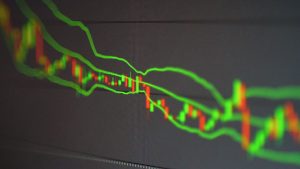If you’ve ever watched price explode out of nowhere and wondered, “Who’s buying this right now?” — chances are you’ve just witnessed a short squeeze or a long squeeze in real time.
Squeezes are some of the most explosive (and dangerous) events in trading. They can liquidate entire groups of traders within minutes, trigger emotional chaos, and create massive price volatility across crypto, forex, stocks, and futures.
Let’s break down exactly what squeezes are, why they happen, and how to protect yourself — or even profit from them.
📈 What Is a Short Squeeze?
A short squeeze happens when traders betting against the market (shorts) are forced to buy back their positions — usually because price starts moving higher, not lower.
When shorts get squeezed, it creates a chain reaction:
- Price starts rising unexpectedly.
- Short traders’ stop losses and liquidations trigger automatically.
- Those forced buy orders push price even higher.
- New shorts panic and start covering too, fueling the rally.
In other words, a short squeeze is a panic-driven buying frenzy from traders who didn’t plan to buy — they’re forced to.
Real Example
Remember the GameStop (GME) squeeze in early 2021? Hedge funds shorted the stock heavily. Retail traders noticed, started buying, and forced short sellers to cover billions in losses.
The result? GME exploded from under $20 to over $400 in a matter of days.
In crypto, similar squeezes often happen on exchanges with high leverage. A small move against the crowd can liquidate thousands of traders instantly.
📉 What Is a Long Squeeze?
A long squeeze is the exact opposite.
It occurs when traders who are long (betting price will go up) get trapped in a sudden downturn. As price falls, stop losses and liquidations are triggered, which forces more selling — driving the market even lower.
It’s essentially a cascade of forced selling.
- Price dips below support.
- Stop losses trigger, adding more sell pressure.
- Leverage longs start getting liquidated.
- Panic sets in, and traders manually exit too late.
This often causes sharp, accelerated drops that look worse than normal corrections.
Real Example
During Bitcoin’s crash from $69,000 to $30,000 in 2021, billions in leveraged long positions were wiped out within days. The cascade of liquidations created massive volatility, even though fundamentals hadn’t changed drastically.
🧠 Why Squeezes Happen
Squeezes are all about liquidity and psychology.
The market moves where the most liquidity lies — and that’s usually where traders set stop losses or overleverage positions.
Market makers and large institutions know this. They can trigger moves into these liquidity zones to fill orders, shake weak hands, and create momentum.
Common Causes:
- Overleveraged markets (especially in crypto futures)
- High open interest concentrated on one side
- Major support/resistance breakouts
- Low-volume environments where small moves have big impact
If too many traders are leaning one way, the market often moves the other — not because of manipulation, but because of liquidity imbalance.
🧩 How to Spot a Squeeze Before It Happens
You can’t predict every squeeze, but you can recognize the conditions that make one likely.
Watch for These Signs:
- Crowded Positioning
When everyone on social media, funding rates, or sentiment indicators is bullish or bearish, it’s a warning sign.
Example: If long funding rates are extremely high, many traders are overleveraged longs — a long squeeze could be near. - High Open Interest
When open interest (the total number of active positions) spikes near key levels, it often signals potential liquidation clusters. - Low Volume Consolidation
Before a squeeze, markets often move sideways with low volume. That builds up fuel for a violent breakout. - Aggressive Wicks and Reversals
Quick, sharp wicks into key zones often show liquidity grabs — early signs of stop-hunting behavior. - Unusual Volatility Near Key Levels
If the price starts whipping around a resistance or support level, market makers may be engineering a move to liquidate trapped traders.
⚙️ How to Protect Yourself (and Trade Smarter)
- Avoid Overleverage
The fastest way to get liquidated is to use 25x, 50x, or 100x leverage with no margin buffer. Even small moves can wipe your position instantly. - Use Stop Losses Wisely
Place stops beyond obvious liquidity zones or above wicks, not exactly at common breakout points where everyone else sets them. - Monitor Open Interest and Funding Rates
When funding turns extreme (very positive or very negative), it’s a signal the crowd is too one-sided. - Scale In and Out
Instead of one large entry, break your position into smaller pieces. That reduces emotional pressure and allows flexibility. - Wait for Confirmation
If a breakout happens, wait for volume confirmation or a retest before jumping in. Many squeezes are fake breakouts meant to trap traders.
💡 Bonus: How Pros Trade Squeezes
Experienced traders sometimes anticipate squeezes and trade them strategically:
- Before a short squeeze, they accumulate longs quietly near support, waiting for liquidation cascades to fire.
- Before a long squeeze, they reduce exposure or take shorts near resistance when funding rates are excessively positive.
The key is never to chase a squeeze once it’s started — by the time it’s obvious, the best entries are already gone.
🎯 Final Thoughts
Squeezes are what make markets both thrilling and terrifying. They expose overconfidence, overleverage, and herd mentality.
Every trader faces them, but how you respond determines your survival.
Stay disciplined. Use structure, not emotion. Keep your leverage reasonable, and treat extreme sentiment as opportunity — not invitation.
The market always rewards those who understand how liquidity works and punishes those who forget.
Trade Smarter With EPIQ
At EPIQ Trading Floor, we teach traders how to spot potential squeezes, analyze funding data, and use volume-based confluence to avoid emotional trades.
Inside EPIQ, you’ll get:
✅ Daily market breakdowns with key squeeze levels marked
✅ Tools to monitor open interest, funding rates, and liquidation maps
✅ Advanced training on volume, sentiment, and structure
✅ A 24/7 trading community to help you stay disciplined through volatility
Start your 3-day free trial today and learn how to trade with structure — not emotion.
Not Financial Advice (NFA): This article is for educational purposes only and not financial advice. Always do your own research and manage your risk responsibly.










Responses